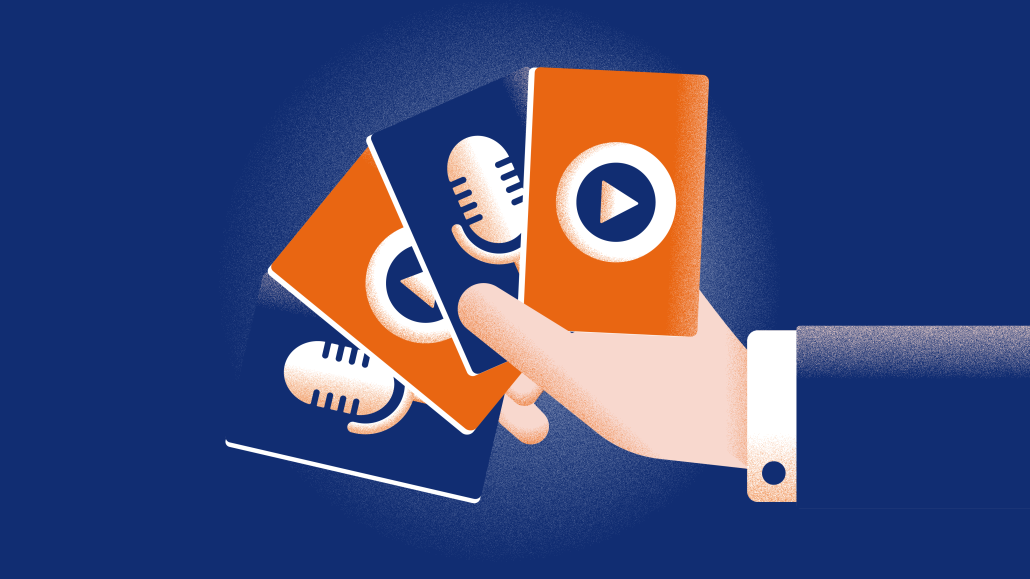Why advertisers are gravitating toward publishers that embrace video and audio

Sponsored by Outbrain
As brands look to associate themselves with engaging and reliable content, publishers are meeting advertisers’ needs by increasingly leveraging audio and video as storytelling and monetization tools. Not only do audio and video attract the younger users that advertisers seek, but these formats also allow brands to run more emotionally resonant campaigns than other ad choices offered by digital publishers.
“Emotion is always going to be one of the most important components of brand building — not just from a memorability point, but also perception and action,” said Craig Hughes, vice president of corporate development and strategic partnerships at Outbrain.
“For advertisers, the challenge with audio and video advertising — which often has broad reach, but still fairly sophisticated targeting ideals — is being very specific about who they work with and how they work with those partners and publishers,” he said. “For users, if you’re consuming a message and you’re consuming that message in an environment you trust, that message has significantly more impact on you.”
Publishers are investing more in video content
While publishers have invested heavily in video to varying success in the past, short-form video is especially important for publishers and advertisers looking to attract younger audiences.
According to the 2022 Reuters Institute Digital News Report, 39% of consumers ages 18-24 use social media as their primary news source, while 34% opt for news websites or apps. The Reuters Institute report also found that 17% of consumers ages 18-24 “mostly watch” the news versus “mostly read” the news online, citing the ease, convenience and engaging content as their top reasons they prefer video.
Advertisers are also drawn to video because of improved performance with audiences.
Per research from Wyzowl, 92% of marketers believe that video will play an essential role in marketing over the coming years. Additionally, according to Statista, spending on video advertising is expected to grow at an annual rate of 12.06% from 2022 to 2027, for a projected market volume of $318.8 billion by 2027.
“There’s no medium that comes close to video in terms of having an emotional impact, engaging people, immersing people and being able to tell a story,” said Hughes. “Video is also much more accountable in driving and measuring performance than it was, so we’re seeing huge value, huge impact and continued investment.”
Why video will become critical to brand awareness
While video is more complicated and time-intensive to produce than other mediums, the investment is worthwhile for both publishers and advertisers, according to Hughes — especially when there is pressure to cut or reshuffle budgets.
“From an advertising point of view, being able to lean into areas where your competitors are withdrawing creates a huge opportunity for brand building,” Hughes said. “The ability to deliver emotional storytelling through video and then measure brand uplift of these ads continues to advance. There are also better opportunities to connect upper-funnel efforts, where video historically was, to the bottom of the funnel in terms of driving someone to take an action.”
Advertisers are also using video to compress the consideration funnel with the help of customer datasets. For instance, a brand can reach a consumer that has previously shown interest in purchasing a car with a video ad that includes a call-to-action to book a test drive at a local dealership.
Audio and video ads also fit into the mobile-first, feed-based content experiences that younger audiences prefer. This user-centric approach adds to the appeal for advertisers wishing to reach consumers where they are most engaged.
Growing investment in publisher podcasts
Like video, rising audio formats —- particularly podcasts — are also seeing growth with publishers and advertisers.
Young audiences are drawn to a range of formats for their news consumption, including audio, video and text, according to the 2022 Reuters Institute Digital News Report. Spotify is among the most popular ways consumers listen to podcasts, along with YouTube, where audiences watch video-led and hybrid podcasts. Meanwhile, subscription publishers are introducing habit-building podcasts, as with The New York Times and The Daily.
According to Hughes, podcasts also have the potential as a revenue stream for publishers that may not have a dominant subscriber base.
“For instance, the New York Post has such a loyal audience that makes multiple visits per day,” Hughes said. “So when the Post launches a podcast, that podcast is going to get listened to because the audience is looking for more content from the Post. This is how podcast advertising becomes a revenue stream.”
When publishers find success through new channels, such as podcasting, it reinforces the trust they have developed with their users. As Hughes explained, these strong relationships entice advertisers looking to engage with audiences in different creative ways.
“The most exciting things in video today are improved engagement and high-quality editorial video content that allows us to do a lot more with engaging ads,” Hughes said. “We can do a really important job of helping engage the right users with the right components of that broad spectrum of advertiser offering, including podcasts and video.”
Sponsored by Outbrain
More from Digiday

After watching X’s ownership issues play out, marketers brace for TikTok whiplash in 2026
TikTok’s ownership drama has echoes of X (formerly Twitter), but ad performance has kept marketers for fleeing—for now.

‘There’s no room for purists’: Generative AI is altering the agency junior talent search
AI is altering agency business models. It’s altering the skills they’re hiring for and where they’re hiring them from, too.

For platforms, here’s what’s not going to happen in 2026
Rather than the traditional platform predictions, this is a list of what Digiday believes won’t happen next year.







